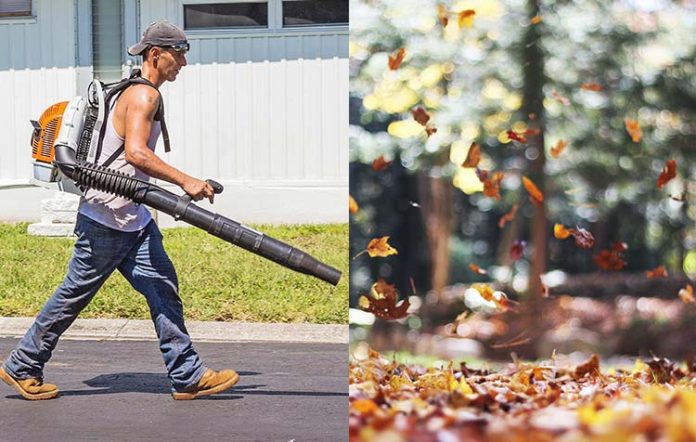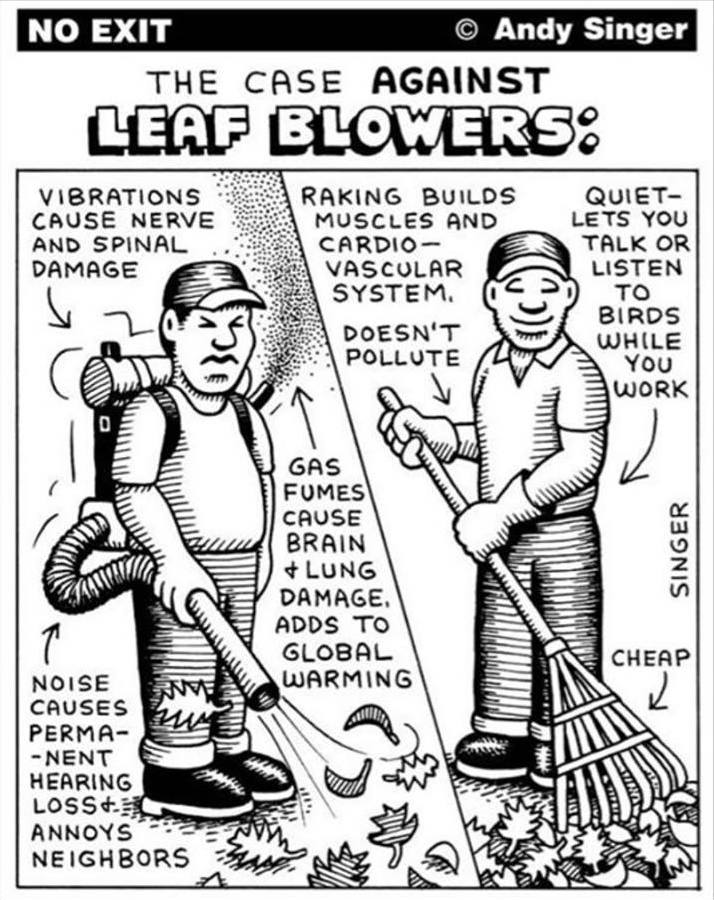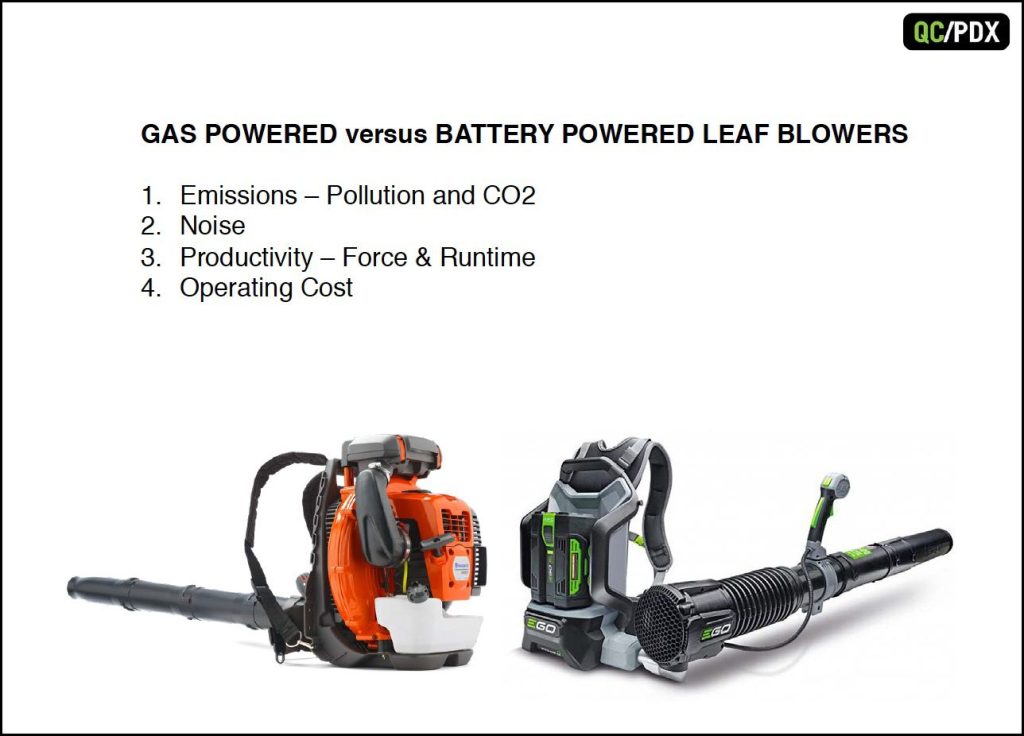So you’ve got a leaf blower, and enjoy the convenience of effortlessly clearing away those pesky autumn leaves. But have you ever stopped to consider the downsides of this efficient tool?
From noise pollution to environmental concerns, there are a few disadvantages to using a leaf blower that you might not have thought about.
This article will explore these drawbacks and explain why you may want to rethink your leaf blower usage.
Noise Pollution
Loud operation
Leaf blowers are notorious for their loud operation, emitting a high level of noise that can be extremely bothersome to both the user and those in the surrounding area. The constant noise these machines create can disrupt the peace in residential neighborhoods, disturbing residents trying to relax or concentrate on their work. The loud noise can be particularly distressing for pets, causing them unnecessary stress and anxiety.
Disturbance to residents and pets
The noise generated by leaf blowers can significantly impact the well-being of residents and their furry companions. The loud and relentless noise can disrupt sleep patterns, making it difficult for people to rest or enjoy a quiet moment in their homes. It can also disrupt daily activities such as reading, watching television, or conversing. Furthermore, pets sensitive to loud noises can become anxious or frightened, affecting their overall quality of life.
Potential for hearing damage
Exposure to high noise levels from leaf blowers can pose a severe risk to the user’s hearing health. Prolonged exposure to loud noise can lead to permanent hearing loss and other related issues. Leaf blower operators are often exposed to noise levels that exceed the recommended safe limits, putting their hearing at risk. This is particularly concerning for professional landscapers and gardeners who regularly use leaf blowers as part of their work, as they are at an increased risk of developing hearing problems over time.
Air Pollution
Release of emissions
Engines power leaf blowers that release various emissions during operation, whether gas-powered or electric. Gas-powered leaf blowers, in particular, emit pollutants such as carbon monoxide, nitrogen oxides, and hydrocarbons, which contribute to air pollution. These emissions can have detrimental effects on both human health and the environment.
Contributing to climate change
The emissions released by leaf blowers, particularly those fueled by gasoline, contribute to climate change. Carbon dioxide, a greenhouse gas responsible for trapping heat in the atmosphere, is released during the combustion of fossil fuels.
The continued use of gas-powered leaf blowers contributes to the overall carbon footprint, exacerbating global warming and its associated impacts.
Health risks associated with pollutants
The pollutants emitted by leaf blowers can pose significant health risks, especially to those with respiratory conditions such as asthma or allergies. Fine particles, known as PM2.5, are often released into the air during leaf blower operation, and these particles can be inhaled into the lungs, leading to respiratory problems and exacerbating existing conditions. Children, the elderly, and individuals with compromised immune systems are particularly vulnerable to the adverse health effects of air pollution caused by leaf blowers.
Dust and Debris
Blowing dust and debris into the air
While leaf blowers are intended to clear away leaves and debris, they often blow dust and other particles into the surrounding air. This can create a hazy and dusty environment, reducing air quality and potentially causing respiratory discomfort for those nearby. The stirred-up dust can also settle on surfaces, making cleanup even more difficult and time-consuming.
Potential health hazards
The blowing of dust and debris by leaf blowers can pose health hazards to both users and those in the vicinity. Fine particles and allergens present in the dust can be inhaled, causing respiratory irritation, coughing, and sneezing. Individuals with respiratory conditions or allergies are particularly susceptible to these health hazards, and airborne dust and debris may exacerbate their symptoms.
Property damage due to flying debris
One of the significant disadvantages of leaf blowers is the potential for flying debris to cause property damage. When using a leaf blower, leaves, small rocks, sticks, and other debris can be forcefully propelled through the air, posing a risk to windows, vehicles, and delicate outdoor decorations. The impact of these objects can result in scratches, chips, or even more extensive damage, making it necessary to take precautions or find alternative methods for leaf removal in areas where property damage is a concern.
Ineffective on Wet Leaves
Difficulty in moving wet leaves
Leaf blowers are not well-suited for removing wet leaves from surfaces. Wet leaves tend to clump together, creating a heavy and compact mass resistant to the airflow produced by leaf blowers. This can make it incredibly challenging for users to effectively move and clear wet leaves using this equipment, leading to frustration and a less efficient leaf removal process.
Heavier workload for users
Attempting to remove wet leaves with a leaf blower can significantly increase the workload for users. The weight and moisture content of wet leaves creates added resistance, requiring users to exert more effort and spend more time on each leaf removal task. This can lead to physical fatigue, particularly for individuals with limited strength or mobility, making the leaf removal process more strenuous and time-consuming than necessary.
Increased risk of clogging
Leaf blowers are designed to handle dry leaves and debris, and attempting to use them on wet leaves can lead to clogging issues. As wet leaves are heavier and stick together, they can easily get caught in the blower’s mechanism, causing blockages and reducing the effectiveness of the equipment. Clearing these clogs can be time-consuming and frustrating, adding to the challenges and limitations of using leaf blowers in wet conditions.
Limited Reach and Portability
Need for an electrical outlet or battery.
Electric leaf blowers require a nearby electrical outlet to be used effectively. This restricts their use to areas within reach of an outlet, limiting the mobility and flexibility of the user. Furthermore, electric leaf blowers powered by batteries have a limited runtime, requiring frequent recharging, which can disrupt the leaf removal process and extend the time needed to complete the task.
Restrictions with cord length or battery life
The cord length of electric leaf blowers can be limiting, preventing users from reaching areas that may require cleaning. The need for an extension cord or multiple power outlets further complicates the process and can be inconvenient. Similarly, battery-powered leaf blowers have limited battery life, which can be problematic when cleaning larger areas or undertaking lengthy leaf removal tasks. These limitations can hinder productivity and require users to plan their activities accordingly.
Limited mobility for larger areas
Due to their design and power limitations, leaf blowers may not be suitable for larger areas such as parks, sports fields, or expansive residential properties. The need to constantly move within the limited range of the leaf blower can be time-consuming and inefficient, especially when compared to alternative methods such as raking or using a lawn mower equipped with a leaf bag attachment. In such cases, a leaf blower may not be the most appropriate tool, and users may need alternative solutions.
Dependency on Fossil Fuels
Gas-powered leaf blowers consume non-renewable resources.
Gas-powered leaf blowers rely on non-renewable fossil fuels to operate. As these fuels are finite resources, their use in leaf blowers contributes to the depletion of these valuable energy sources. This raises concerns about future availability and perpetuates dependence on fossil fuels, hindering efforts to transition to more sustainable and environmentally friendly alternatives.
Contribution to greenhouse gas emissions
The combustion of fossil fuels in gas-powered leaf blowers releases greenhouse gases, such as carbon dioxide and methane, into the atmosphere. These gases are significant contributors to climate change and global warming. With the continued use of gas-powered leaf blowers, the emission of these gases persists, further aggravating the environmental challenges our planet faces.
Environmental impact of extraction and transportation of fossil fuels
The production, extraction, and transportation of fossil fuels have significant environmental impacts. The extraction process can lead to habitat destruction, water contamination, and the release of harmful pollutants into the environment. Additionally, transporting these fuels from extraction sites to gas stations contributes to carbon emissions and can result in accidents or oil spills, causing further harm to ecosystems. We indirectly support these environmentally damaging practices by relying on gas-powered leaf blowers.
Risk of Accidents
Flying debris may cause injury.
The forceful airflow created by leaf blowers can propel debris through the air at high speeds, increasing the risk of potential injuries. Small rocks, twigs, or other objects can become dangerous projectiles, threatening the user and individuals nearby. Eye injuries, cuts, and bruises are common accidents associated with using leaf blowers, highlighting the need for caution and protective measures.
Potential damage to property or cars
As mentioned earlier, debris blowing by leaf blowers can damage property, particularly windows, vehicles, and other fragile surfaces. The impact of flying debris can lead to scratches, dents, or shattered glass, requiring costly repairs or replacements. Users need to be mindful of their surroundings and take necessary precautions to prevent such damage from occurring.
Uneven terrains or obstacles increase fall risks.
Operating a leaf blower on uneven terrains or areas with obstacles can increase the risk of falls and injuries. The strong airflow produced by leaf blowers can affect balance and stability, causing users to stumble or trip. Uneven ground, loose gravel, or unexpected obstacles such as tree roots and branches can further hinder safe operation. Users should exercise caution and choose alternative methods or equipment more suitable for navigating challenging landscapes.
Time and Labor Intensive
Clearing a large area requires significant time and effort.
When clearing a large area, leaf blowers may not be the most efficient option. While they can help gather leaves into piles, collecting and removing them from the area can be time-consuming. Leaf blowers do not eliminate the need for manual labor, as they rely on users to physically gather and dispose of the piles of leaves. This additional step can be particularly time and labor-intensive, negating the perceived convenience of using a leaf blower in the first place.
Lack of efficiency compared to other methods
Although leaf blowers can move leaves and debris effectively, they may not be as efficient as alternative leaf removal methods. Raking, for example, allows for more precise control over leaf placement and collection. By manually raking leaves into bags or piles, users can more effectively clear the area without the limitations and challenges presented by leaf blowers. The traditional raking method may be faster and more efficient in many cases, especially when dealing with wet, compacted leaves.
Additional cleanup is needed after blowing
One of the drawbacks of using leaf blowers is the additional cleanup required once the blowing process is complete. While the intention of using a leaf blower is to streamline and simplify leaf removal, the blowing action can scatter debris and dust over a larger area. This necessitates extra time and effort to clean up the surrounding surfaces and potentially increase the workload for the user. The need for secondary cleanup undermines the perceived convenience and efficiency of using a leaf blower.
Limited Functionality
Ineffective for removing wet or compacted leaves
As mentioned earlier, leaf blowers are not well-suited for removing wet leaves. The compact nature of wet leaves makes them resistant to the airflow produced by leaf blowers, rendering them ineffective for the task. Similarly, leaf blowers may struggle to dislodge leaves that have become compacted or matted on the ground. In such cases, alternative methods such as raking or mulching may be more efficient and yield better results.
It does not address leaf disposal
While leaf blowers excel at moving leaves and debris, they do not offer a comprehensive solution for leaf disposal. After the leaves have been gathered into piles, users must still manually collect and dispose of them by bagging them or transporting them to a suitable disposal area. This additional step can be time-consuming and labor-intensive, especially when dealing with large amounts of fallen leaves.
Not suitable for delicate garden areas
Leaf blowers may not be suitable for delicate garden areas requiring precision and gentleness. The forceful airflow from leaf blowers can disturb and damage fragile plants, flowers, or delicate landscaping features. In such cases, alternative methods of leaf removal, such as hand-picking or manual raking, would be more appropriate to maintain the integrity and aesthetics of the garden.
Expense
Cost of purchasing a leaf blower
Leaf blowers can vary in price depending on the type, model, and features. Gas-powered leaf blowers are more expensive than electric ones, and high-quality models can come with a higher price tag.
The initial cost of purchasing a leaf blower can be a significant investment for homeowners or professional landscapers, particularly if they require additional features or accessories to suit their needs.
Maintenance and repair expenses
Owning a leaf blower also incurs maintenance and repair expenses. Regular maintenance, such as cleaning air filters, lubricating parts, and replacing worn-out components, is necessary to ensure optimal performance and longevity of the equipment.
Additionally, unforeseen malfunctions or breakdowns may occur, requiring professional repair services or the purchase of replacement parts. These expenses can add up over time, especially for users who heavily rely on their leaf blowers for frequent use.
Potential need for additional accessories or attachments
To maximize the functionality of a leaf blower, users may find themselves needing to purchase additional accessories or attachments.
These can include extension tubes for reaching higher spots, collection bags for more straightforward leaf disposal, or noise-reducing attachments to mitigate sound emissions. These optional accessories can significantly increase the overall expense of owning and using a leaf blower.
In conclusion, while leaf blowers offer certain conveniences and efficiencies in leaf removal, they come with various disadvantages that must be carefully considered.
The noise pollution caused by leaf blowers can be disruptive to residents and pets, posing potential health risks and disturbing the tranquility of neighborhoods. Also, leafblowers contribute to air pollution, emitting harmful pollutants and greenhouse gases that adversely affect human health and the environment.
The blowing of dust and debris, limitations in handling wet leaves, and dependence on fossil fuels further highlight the drawbacks of these devices. Safety concerns, labor intensiveness, limited functionality, and the associated costs of purchasing, maintaining, and equipping leaf blowers make it essential for individuals to weigh their options and explore alternative methods of leaf removal that may align better with their needs and environmental considerations.








































